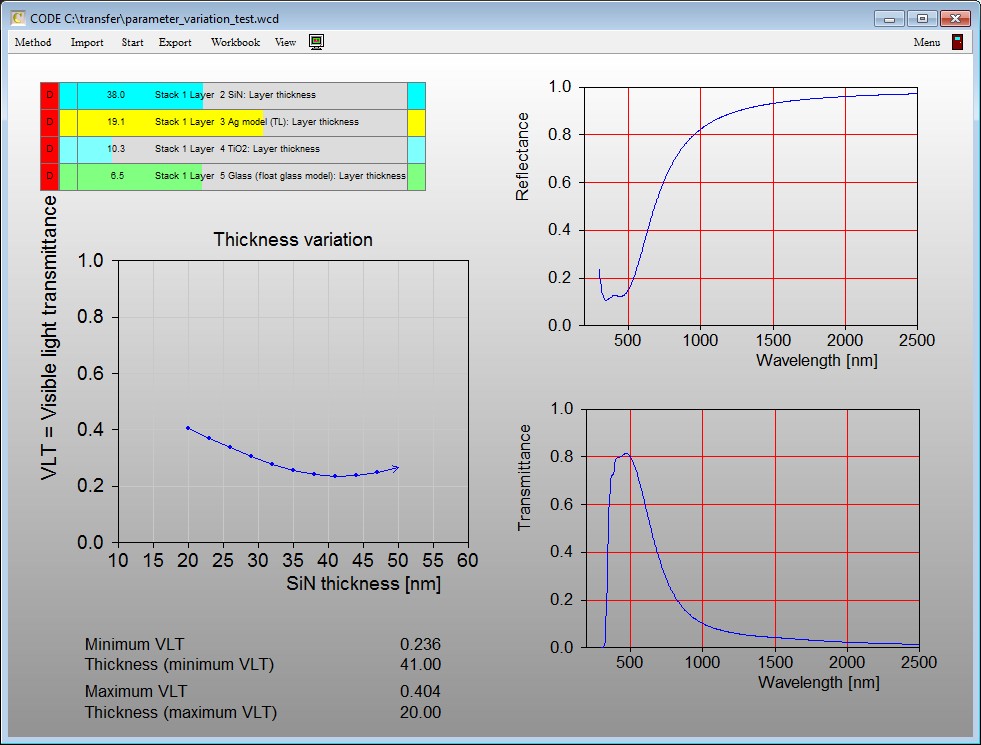Wrong counting of fit parameters in master models could happen when some parameters had been selected as slave parameters. This has been corrected.
Category Archives: CODE
Enhancement of parameter variation objects
Objects of type ‘parameter variation’ in the list of special computations keep the highest and lowest y-values and the corresponding x-values. You can retrieve these values as optical functions and show them in a view.
Here is an example:
The SCOUT technical manual has been updated – it contains a documentation of parameter variation objects as members of the list of special computations. Here is a link:
Quick jump to ‘home’ configuration
Pressing the key h in the main view immediately jumps to a default home configuration. You can set this configuration using the command File/Options/Set default home configuration. The setting will be stored for each user individually.
List of fit parameters: New commands in ‘Actions’ submenu
We have added some new commands in the submenu ‘Actions’ which turned out to be practical when fitting many oscillators of organic materials in the infrared.
- Set active material: Type in the name of a material (must be present in the list of materials) in order to select it for the actions below.
- Select all parameters: Select all parameters of the active material as fit parameters.
- Select oscillators: Selects all oscillator parameters of the active material as fit parameters. This is useful while adjusting models for organic materials in the infrared which may may have many oscillators. Manual parameter selection is tedious in such a case. Please note that for Kim oscillators (which are very much recommended) the parameter ‘Gauss-Lorentz switch’ is not selected since we found that in almost all cases absorption bands have a Gaussian line shape which is the default setting of Kim oscillators.
- Select oscillator strengths: Selects all oscillator strengths of the active material as fit parameters.
Bug fix “List of susceptibilities”
The menu command File/Report produced a funny output in the workbook, but not the wanted list of susceptibility parameters. We have changed this feature back to the serious version of the output.
Improvements “Multiple spectra view”
Objects of type “Multiple spectra view” do their automatic scaling more clever now, taking into account all active spectra.
These view objects can now be selected by a single mouse click and then scaled using the controls in the status bar, like field view objects. Also the little buttons R (restore graphics), A (automatic scaling) and E (edit graphics parameters) work with these objects.
HASP dongle driver for Windows XP
If you would like to use our software on Windows XP and you have a dongle license, you can get the XP dongle driver using this link.
Bugfix: Memory leak PL computations
PL computations showed a memory leak, ending up in problems during fitting with frequent re-computations of the model. The leak has been fixed today.
New ‘News’ command
The function of the menu item ?/News has been changed – it opens this documenation of program changes now.
New export option of integral quantities
Integral quantities of type ‘Color fluctuation’ and ‘Color angle variation’ can now export their data to the workbook. They generate new worksheets which contain the computed numbers.

